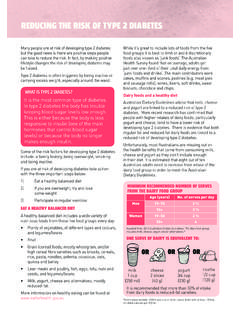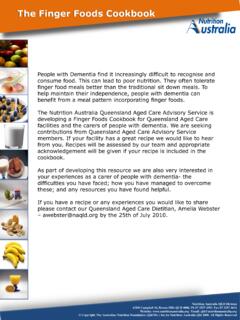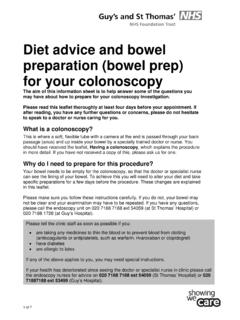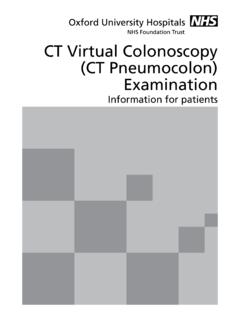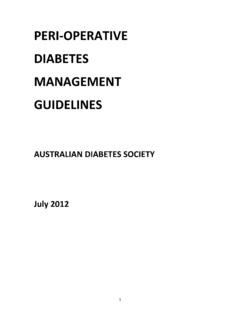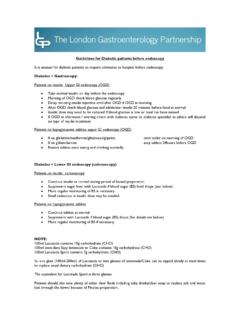Transcription of LACTOSE INTOLERANCE - Nutrition Australia
1 LACTOSE INTOLERANCEP eople with LACTOSE INTOLERANCE experience symptoms such as diarrhoea, abdominal pain, flatulence and/or bloating after consuming LACTOSE . LACTOSE INTOLERANCE is mostly a deficiency, not an absence of the enzyme lactase. These symptoms occur because the body does not fully digest LACTOSE , a type of sugar that is naturally present in milk and other dairy DO I KNOW IF I HAVE LACTOSE INTOLERANCE ?As LACTOSE INTOLERANCE is sometimes confused with other medical problems, such as irritable bowel syndrome (IBS), it is best to get a proper diagnosis from a health professional. Although self-diagnosis is common, it is not a good idea as it can lead to some people needlessly missing out on the important nutrients provided by milk and other dairy COMMON IS LACTOSE INTOLERANCE ?
2 It is estimated that only one in 20 Caucasians have some degree of LACTOSE INTOLERANCE . LACTOSE INTOLERANCE is more common among Australian Aborigines and people from Asia, Africa, the Middle East and some Mediterranean countries. LACTOSE INTOLERANCE can also be caused by some illnesses, such as gastroenteritis (gastro), which temporarily reduce the body s ability to digest LACTOSE . When this occurs, a low LACTOSE diet may be recommended for a few weeks by your health professional before reintroducing LACTOSE containing foods. WHAT DO YOU DO IF YOU ARE DIAGNOSED WITH LACTOSE INTOLERANCE ?Among people diagnosed with LACTOSE INTOLERANCE , there are big differences in the amount of LACTOSE that can be consumed without symptoms developing.
3 There is no need to cut out all dairy foods from the diet but rather adjust LACTOSE intake according to tolerance. According to the Australian Dietary Guidelines, people with LACTOSE INTOLERANCE can tolerate up to 250ml (one glass) of milk each day if it is consumed in small amounts throughout the day and consumed with other foods. People with LACTOSE INTOLERANCE can generally eat cheese, as most types of cheese are very low in LACTOSE . Yogurt is also generally well digested as the bacteria in yogurt helps break down the LACTOSE . The following table lists the LACTOSE content of various dairy ARE DAIRY FOODS IMPORTANT?
4 Dairy foods such as milk, cheese and yogurt are important for good Nutrition throughout childhood and adulthood. While milk, cheese and yogurt are an excellent source of calcium they also provide other essential nutrients including potassium, phosphorus, magnesium, protein, vitamin A, riboflavin, vitamin B12 and to the Australian Dietary Guidelines, consumption of milk, cheese and yogurt can help protect against heart disease and stroke, and can help reduce the risk of high blood pressure and some cancers; may reduce the risk of type 2 diabetes; and may contribute to stronger INTOLERANCEW hile dairy foods do not need to be eliminated from your diet if you are LACTOSE intolerant, the amount of LACTOSE that can be tolerated will vary from person to person.
5 Check ingredient lists on foods and pharmaceutical products for the presence of LACTOSE . * The LACTOSE content in yogurt decreases each day, even while it sits in the fridge, because its natural bacteria uses LACTOSE for foodLactose content (g)Parmesan cheese, cheese, style cheese, , cheese, , 20g (1 tblspn) cream, cheese, (natural), *Regular milk, Australians don t consume enough of the milk, cheese, yogurt and/or alternatives food group and so are missing out on the numerous health benefits linked with these the tables below to work out how many serves from the dairy food group are needed each Guidelines advise that more than 50% of intake from dairy foods should be reduced-fat varieties.
6 For recipes and ideas on how to include adequate serves of dairy foods in your healthy eating plan visit more information, contact an Accredited Practicing Dietitian. The information provided in this document is intended to be used as a guide only. Dairy Australia recommends that all persons seek independent medical advice and, where appropriate, advice from a qualified dietitian, before making changes to their dietary intake. Whilst all reasonable steps have been taken to ensure the accuracy of the information contained above, to the fullest extent permitted by Australian law Dairy Australia disclaims all liability for any inadvertent errors and for any losses or damages stemming from reliance upon the content.
7 For further information on any of our resources, visit , or call our consumer line on 1800 817 736. Dairy Australia Limited (ACN 105 227 987) of Level 5, IBM Centre, 60 City Rd, Southbank, Victoria, 3006, Australia . This brochure may be photocopied for non-profit or non-commercial applications. All other rights reserved. January 2015 [DA0447] HEALTH AND Nutrition yogurt3 4 cup(200 g)cheese2 slices(40 g)MINIMUM RECOMMENDED NUMBER OF SERVES FROM THE DAIRY FOOD GROUPA dapted from: 2013 Australian Dietary Guidelines. The dairy food group includes milk, cheese, yogurt and/or alternatives.*ONE SERVE OF DAIRY IS EQUIVALENT TO:OROROR ricotta1/2 cup(120 g)*Alternatives include: 250ml soy, rice or other cereal drink with at least 100mg of added calcium per 100mlAge (years)No.
8 Of serves per dayMen19 70 2 70+ 3 Women19 50 2 50+ 4 Pregnant or breast feeding 2 Boys2-31 4-829-112 12-183 Girls2-31 4-81 9-11312-183 milk1 cup(250 ml)To help you include dairy foods in your diet every day: Drink milk with other foods rather than on an empty stomach. Spread out your milk consumption across the day, rather than having it all at once. Build up your tolerance by starting with small amounts of milk then gradually increasing your intake. Yogurt is often better tolerated than milk. Most hard cheeses are low in LACTOSE and are well tolerated. If you still have problems, try low- LACTOSE milk or yogurt or a LACTOSE digesting preparation (available from chemists).





